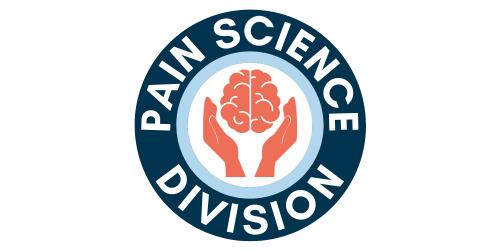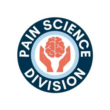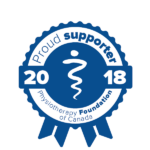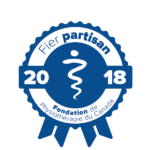A discussion with Susan Tupper

Nathan: Could provide us with a brief background about yourself?
Susan: I got my physiotherapy degree in 1992, from Western University. I actually graduated, got married and bought my first car all in the same week. We moved to BC for my husband’s master’s degree, and I started working in a private clinic in Vancouver. I got to know the insurance system quite well, because most of the people I treated had chronic pain. Following which, we relocated to Saskatoon and ended up in the CBI system. After a few years in clinic, I went to U of S to do a PhD in community health and epidemiology. I was fortunate to be part of a CIHR strategic training initiative and focused my PhD on the relationship between physical activity and pain in kids with arthritis. After that, I did a postdoc in pediatrics pain before starting my current job at the Saskatchewan Health Authority (SHA) as their strategy consultant for pain quality improvement.
Nathan: Can you describe what your position as the strategy consultant for pain quality improvement looks like, on a day-to-day basis?
Susan: It really changes from one day to the next. Probably about two thirds of what I do is research, centered on developing our provincial pain strategy and supporting underserved populations. I am also leading a working group aiming to develop a provincial clinical standard for pain assessment and management. In addition to the standard development, we worked on additional support for the providers, assessment tools and elements to facilitate implementation, like documentation forms. Outside of research, I am actively involved in different educational opportunities, such as developing a learning module for healthcare providers about pain assessment and management for the province.
Nathan: It sounds like you are involved with a lot of projects! Could you tell us more about the advocacy efforts that you are involved with?
Susan: A lot of the work I do is interprofessional. For example, the clinical standard for pain assessment and management is intended for everyone who provides clinical care in the SHA. And because it is for all disciplines, for all types of patients, and all types of pain, and for every point of access to care across the SHA, it is more focused on general principles of care. The broad themes we are including are aligned with IASP’s new definition of pain, that chronic pain is a disease and not necessarily a symptom of some underlying tissue issue. But also, that we cannot really measure pain but rather what people are expressing of this experience. The corresponding learning module was really build using a collaborative approach across the SHA, to ensure it was relevant to everyone. Another piece of my advocacy efforts is to work on developing an integrated pain strategy across the province. I am working with a number of different groups and people to try and build our pain services and make sure that there is good communication between the different groups, and I am trying to raise the profile of pain management to the senior leadership team and helping them to recognize the importance of high-quality care. Overall, I am trying to help care providers to build the capacity to feel competent and supported in caring for people with chronic pain. To add to this, I am also trying to address stigma and marginalization in healthcare towards people with chronic pain but also people who use substances, through my research projects. Outside of the public system, I am the Chair of the Board of Directors of SaskPain. SaskPain is a non-profit organization external to the SHA and provides a source of information for pain management.
Nathan: How can we help in terms of advocating for pain management?
Susan: I guess it depends on where you are and what you are doing. Based on your situation, career stage and environment, there are a lot of ways to advocate for pain management. It could be at a one-to-one level by working with a patient and providing pain science information, to help them reconsider the way they think about pain. Or it could be by helping them to advocate for themselves, by discussing how to speak with their family physician or insurance agent. Or directly speaking with their employers, family, coworkers, or teachers. You could also advocate by challenging misinformation and raising people’s awareness about pain management. At a higher level, you can join groups dedicated to this goal such as the Pain Science Division, you can offer to teach people about pain management during workshops, presentations, journal clubs and other events. Perhaps the biggest piece of advocacy for PTs is to recognize and advertise the importance of non-pharmacological approaches to pain management, and how physiotherapy is best suited to help with this. That and building a network of providers who can provide complementary care to your patients, such as family physicians, pharmacists, social workers or counselors. Overall, I would say it’s about keeping your eyes open to opportunities and taking part in them.
Nathan: What are some of the areas that are not yet fully addressed, in terms of pain management advocacy?
Susan: I think that there is a growing awareness of the populations that tend to be marginalized, discriminated, and lost in the system. And many initiatives are working to reach and support these populations. But there needs to be a systemic shift. How can you provide good-quality pain management to someone who is struggling to find housing and have no possessions? Are you going to give them relaxation exercises and do a bit of manual therapy? It’s hard to use the tool we have in any reasonable way. These issues need to be looked at from a systemic level. We need to wrap services around these individuals and preferably prevent this kind of thing from happening. There is a real need to help marginalized populations navigate the health system and access the resources they need. So really, the next level for advocacy is going after that structural stigma within our health system. The way that the policies are created, the way that the funding models are designed, the way that the approaches to care are delivered, contributes to the stigmatization of marginalized populations. I think that advocacy efforts should focus on recognizing that the system needs to change in order to help people with the most challenging needs, and work towards that important goal.
Nathan: Do you have any closing words that you wish to share with us? Susan: I always like to remind physios that we are a cornerstone of pain management care and the value of what we offer as leaders in pain care should not be underestimated. We are essential components of the healthcare system and especially when it comes to chronic pain management. We cannot do it all by ourselves, but we can certainly organize, coordinate, collaborate, and find supports for our patients.



